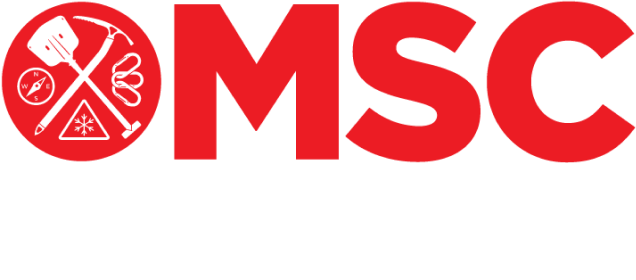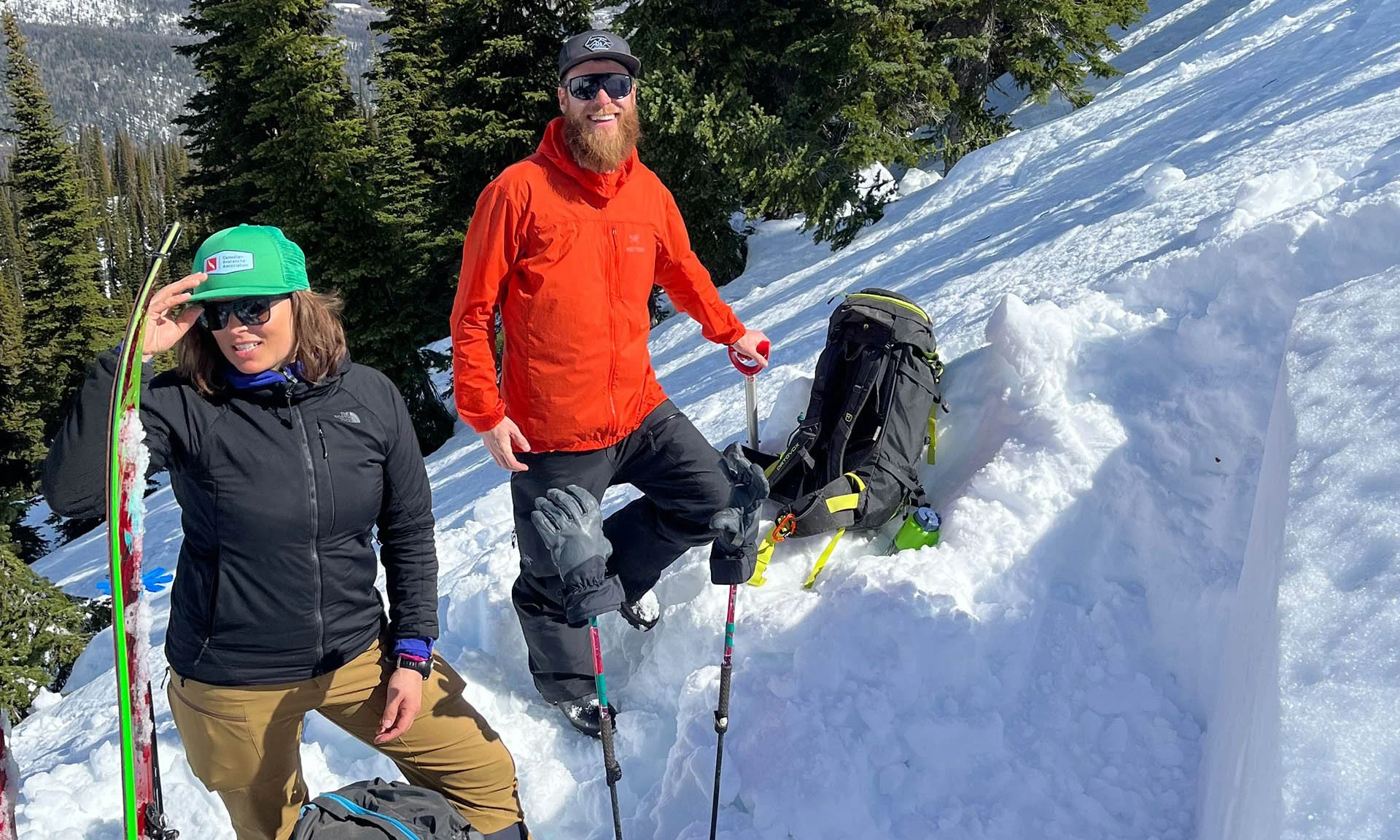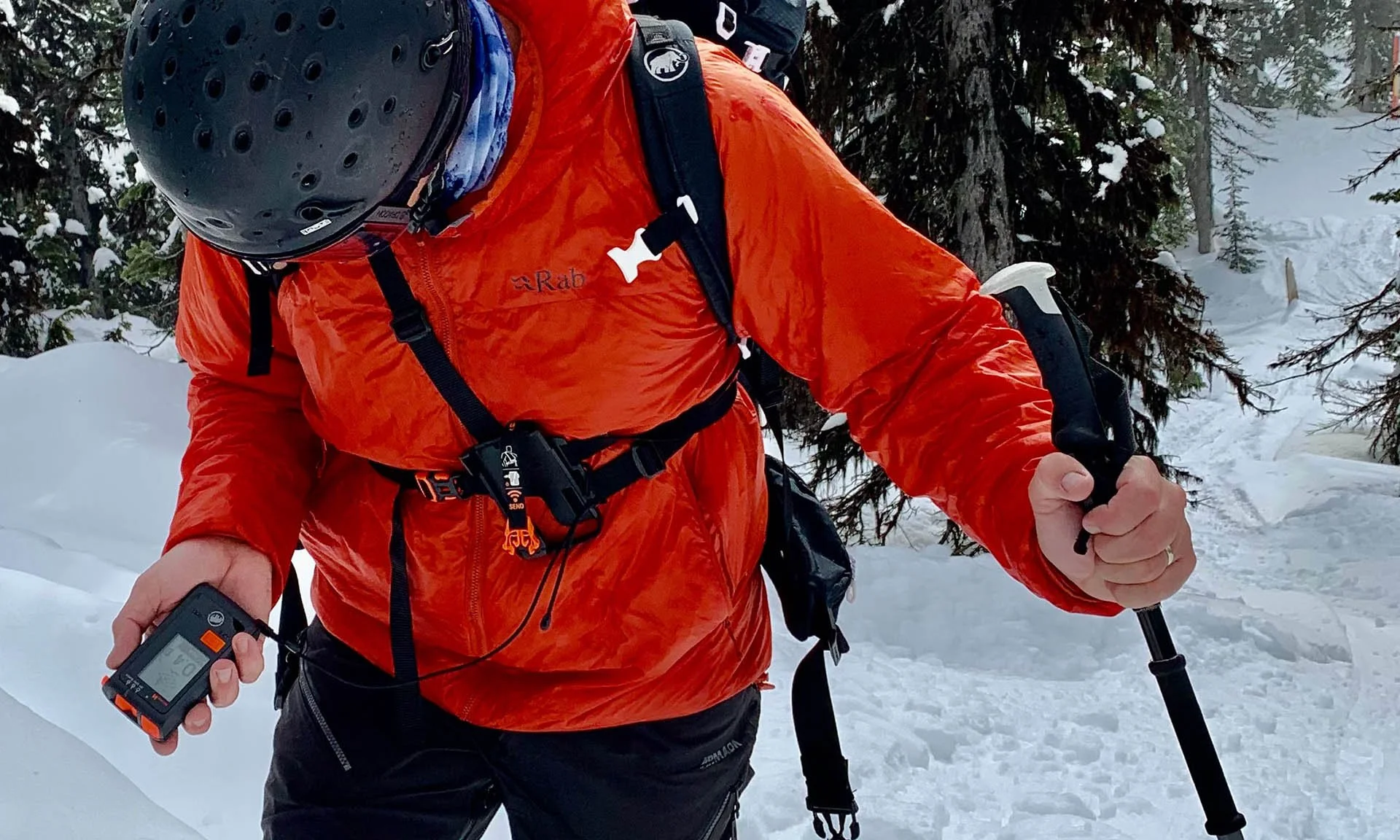Winter 2021 saw Mountain Safety Collective (MSC) start a program of paid professional field observations by two of our well-credentialed members, Luka Szczepanik and Kyle Boys. Kyle is certified under the NZ Avalanche Risk Management (Level 5) course and Luka completed the Canadian Avalanche Association’s Avalanche Operations (Level 1).
Digging snow profiles in Fernie during the CAA Avalanche Operations Level 1 course. Can you spot the hazards?
The reason these certifications are essential for professional field observations is to ensure that the data being collected for MSC’s Lead Forecaster is consistent and accurate, in turn leading to better hazard reporting for the public. The success of this pilot program for professional field observations in 2021 means MSC will be looking to expand our network of qualified observers in 2022 and beyond.
As someone who joined MSC via 20+ years of recreational backcountry skiing and snowboarding, I thought I had a reasonable grasp of snow science and hazard risk mitigation. I’ve done AST and equivalent courses over the years, occasionally practised with my avalanche safety gear and dug the odd snow pit to check for weak layers. I was almost offended when Craig Sheppard, MSC’s Lead Forecaster, first told me my random field observations “aren’t really the standard we need”! So, when the borders opened up in late 2021, I booked myself into the final CAA Ops course of the Winter in Fernie, BC.
Brydon’s razor sharp Rutschblock walls getting an A+ from Julie, our CAA Instructor.
I finished the course yesterday and wanted to share what you can expect if you’re considering doing it yourself. First up - this is NOT a course for recreationalists. Do your AST1 and AST2 if you want a course that’s primarily focused on how to stay safe with your friends in the backcountry. The most skiing you’ll likely do on an Ops course is from the snow profile you just dug back to the weather observation plot. If you want to dip your toe into what the CAA Ops course covers, you can start by doing the prerequisite online Introduction to Avalanche Operations that you need to complete before applying for the in-person course.
As a CAA Industry Training Program, the Ops course is targeted towards anyone wanting to work in professional ski patrol and related resort operations, certified ski guiding (Ops Level 1 is a prerequisite for further qualifications), transport (Roads and rail) and industries located in avalanche prone regions like mining and forestry. Anyone who’s completed their Ops course will be able to speak the same snow-language regardless of industry they work in, and provide observations that are consistent and accurate. For Ops Level 1 graduates, you are only qualified to collect data and provide it to a forecaster who has Ops Level 2 or 3 for deeper interpretation.
The course is around $2500 for a town based course and $4000 for a hut based course, so quite a substantial investment if you’re not planning to use it in a professional context and claim a tax deduction!
Held over seven consecutive days, the course pace and volume of material is intense - expect 7am starts and 10 hour days with no scheduled breaks. A typical day will start waking up in the dark and spending a few hours in a classroom covering the day’s key topics before heading out into the field. The field component always starts and ends in the weather observation plot where you’ll be collecting daily data from the site and local telemetry before heading back to the classroom for a couple more hours of theory and reflection.
The depth of detail can be daunting!
Most days include some form of assessment, and day one kicks things off with a multi-burial avalanche rescue test. There will be no course based practice or instruction for this component and students are expected to arrive ready to search and dig. Having a modern, 3 antenna digital transceiver with a multi-burial mode is a massive help in this regard, and I was lucky to have a new Barryvox S provided to MSC by Mammut that made the search a breeze.
The Mammut Barryvox S transceiver making the avalanche rescue exam that much easier
The following four days follow a similar format, with the emphasis quickly moving onto snowpack assessment and digging multiple snow profiles - so many that the running joke was that I’d be able to tell my friends I’d spent most of my ski trip digging holes. On the sixth day you’ll be tested on how neatly you can craft a snow profile and how accurate your observations of snow layers, crystals, density and reactivity are.
In between the field tests, the instructors will pull you aside and quiz you on what the weather’s doing, identifying the best routes to ascend and ski down on distant peaks and looking in your note book to check you’ve been recording everything neatly and accurately. I definitely needed to lift my game in the latter regard, so get into the habit of logging your backcountry trips and observations before taking the Ops course.
The course culminates on day seven with a two hour written exam on all the topics covered and a final avalanche terrain assessment, similar to those found on Avy Savvy. There’s a requirement to pass every unit with at least 70% and a fail in one or more units may mean an entire course fail, which was unfortunately the case for a couple of people in our group.
The approach taken by the instructors is to set students up for success if they’ve done the groundwork. Homework exercises are generally related to the final written exam and tips they give you on field technique are directly related to what they’re looking for in order to pass you. However, there’s no shortcuts to success, and you do need to know the material in depth and be able to demonstrate efficient, accurate and skilful field techniques.
It’s a gruelling week, but incredibly satisfying to complete it with an enhanced understanding of snow science and avalanche risk. Now, to put it all into practise!
Owen Lansbury - April 2022





